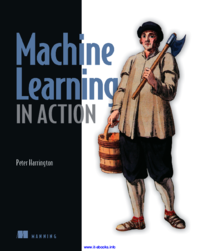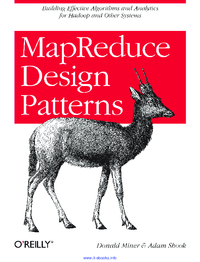Etiqueta "MapReduce"
Se han encontrado 2 Coincidencias
Machine Learning in Action
Machine Learning
148 Visitas | 198 Descargas | 2015-12-11 18:24:04 | pecarrazana
This book sets out to introduce people to important machine learning algorithms. Tools and applications using these algorithms are introduced to give the reader an idea of how they are used in practice today. A wide selection of machine learning books is available, which discuss the mathematics, but discuss little of how to program the algorithms. This book aims to be a bridge from algorithms presented in matrix form to an actual functioning program. With that in mind, please note that this book is heavy on code and light on mathematics. Audience What is all this machine learning stuff and who needs it? In a nutshell, machine learning is making sense of data. So if you have data you want to understand, this book is for you. If you want to get data and make sense of it, then this book is for you too. It helps if you are familiar with a few basic programming concepts, such as recursion and a few data structures, such as trees. It will also help if you have had an introduction to linear algebra and probability, although expertise in these fields is not necessary to benefit from this book. Lastly, the book uses Python, which has been called “executable pseudo code” in the past. It is assumed that you have a basic working knowledge of Python, but do not worry if you are not an expert in Python— it is not difficult to learn.

MapReduce Design Patterns
MapReduce Design Patterns
80 Visitas | 89 Descargas | 2015-12-11 18:28:50 | pecarrazana
MapReduce is a computing paradigm for processing data that resides on hundreds of computers, which has been popularized recently by Google, Hadoop, and many others. The paradigm is extraordinarily powerful, but it does not provide a general solution to what many are calling “big data,” so while it works particularly well on some problems, some are more challenging. This book will teach you what problems are amenable to the MapReduce paradigm, as well as how to use it effectively. At first glance, many people do not realize that MapReduce is more of a framework than a tool. You have to fit your solution into the framework of map and reduce, which in some situations might be challenging. MapReduce is not a feature, but rather a con? straint. This makes problem solving easier and harder. It provides clear boundaries for what you can and cannot do, making the number of options you have to consider fewer than you may be used to. At the same time, figuring out how to solve a problem with con? straints requires cleverness and a change in thinking. Learning MapReduce is a lot like learning recursion for the first time: it is challenging to find the recursive solution to the problem, but when it comes to you, it is clear, concise, and elegant. In many situations you have to be conscious of system resources being used by the MapReduce job, especially inter-cluster network utilization. The tradeoff of being confined to the MapReduce framework is the ability to process your data with dis? tributed computing, without having to deal with concurrency, robustness, scale, and other common challenges. But with a unique system and a unique way of problem solving, come unique design patterns.
Contribuir
Usted puede contribuir con Libros UCLV, es importante para nosotros su aporte..
Contribuir